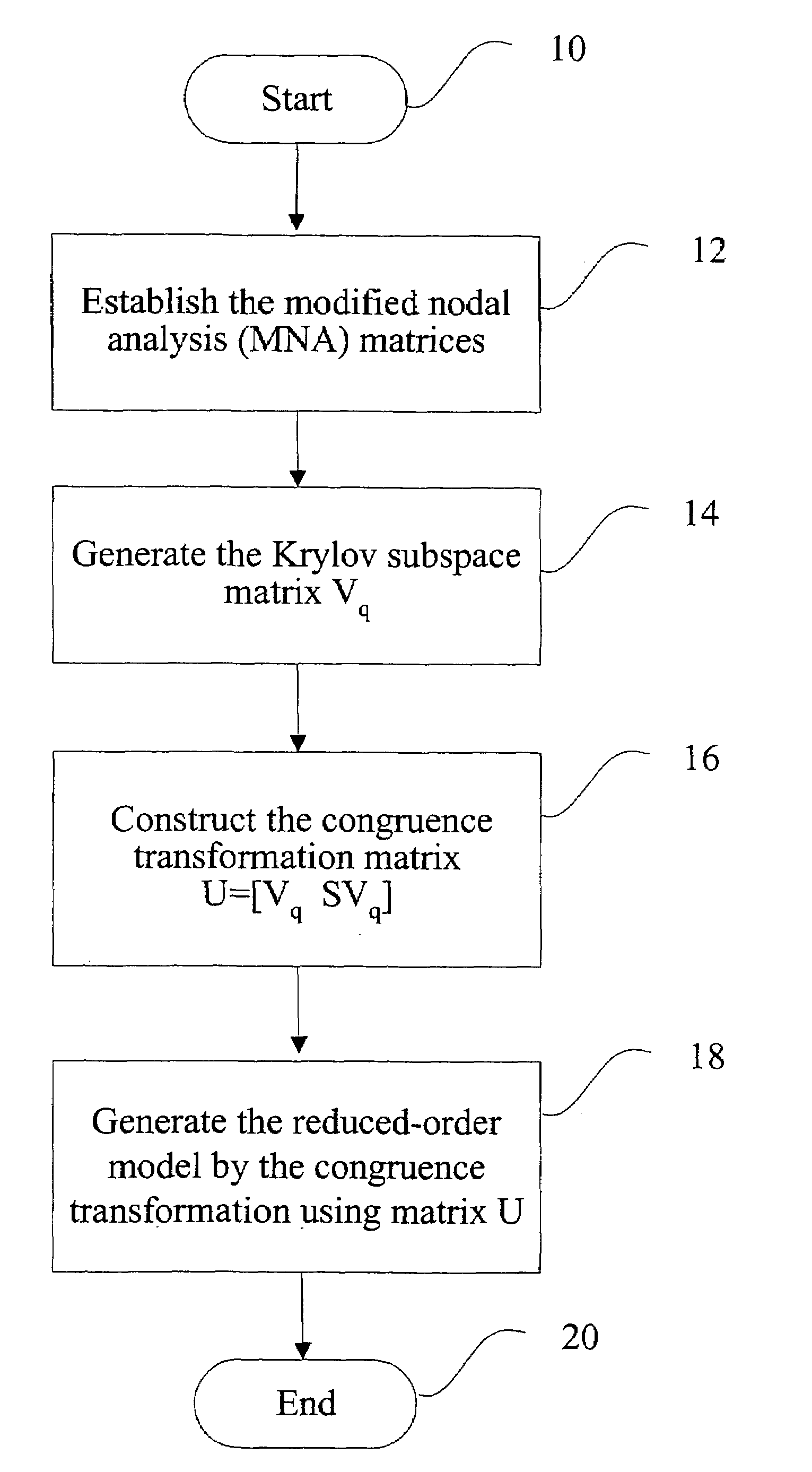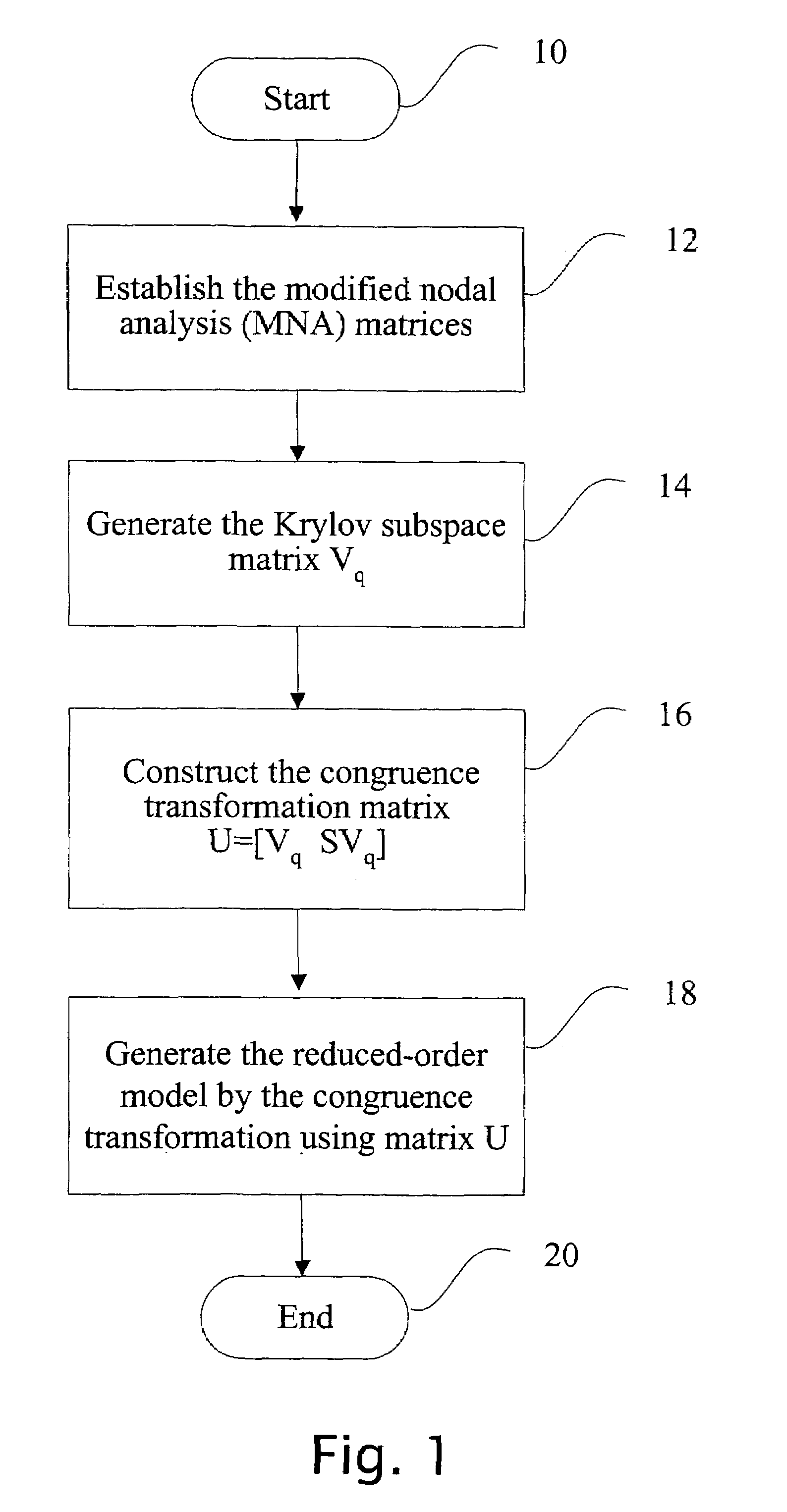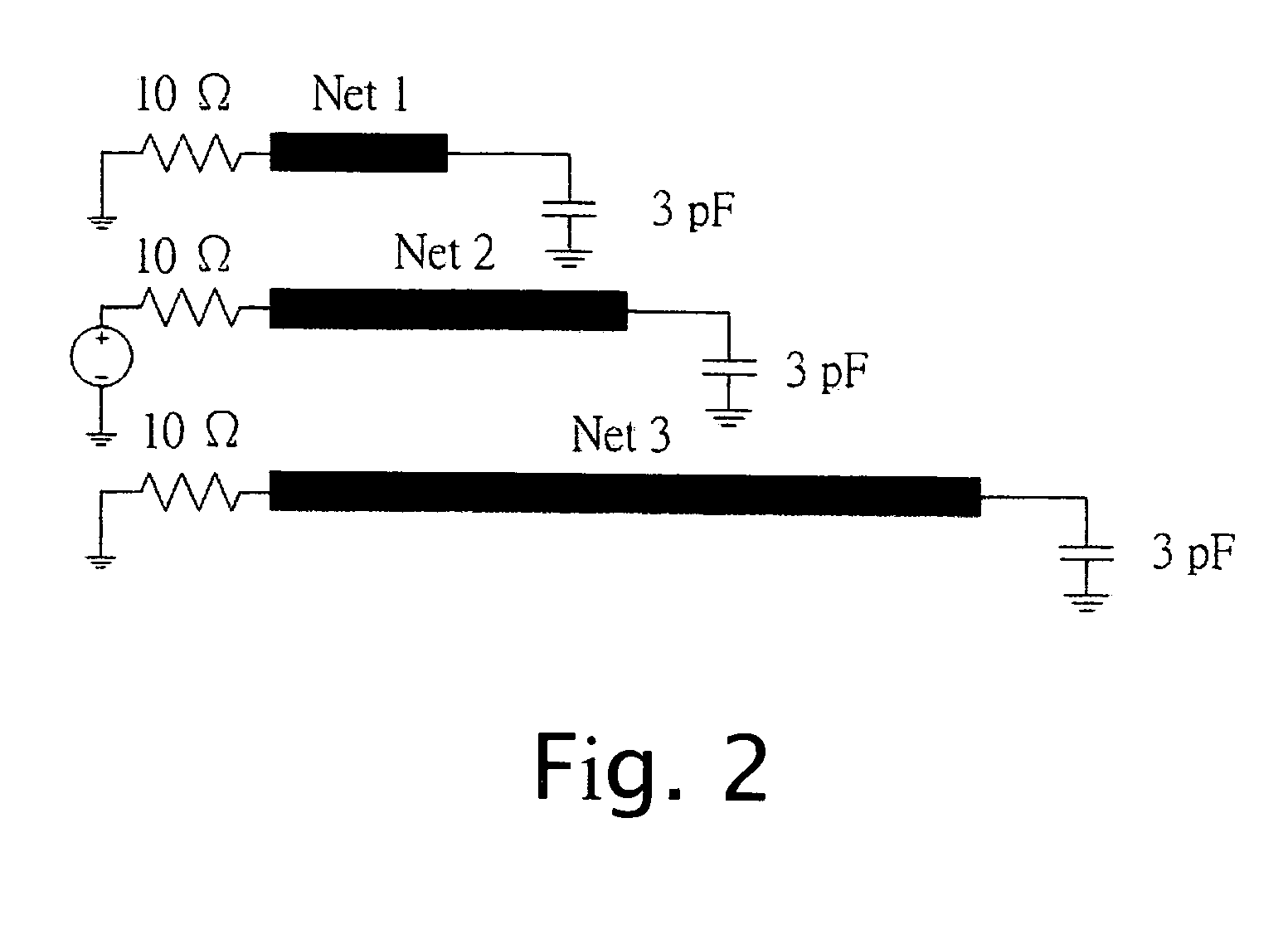Method and apparatus for model-order reduction and sensitivity analysis
a model-order reduction and sensitivity analysis technology, applied in the field of model-order reduction and sensitivity analysis for vlsi interconnect circuits, can solve the problems of numerical ill-conditioned orthogonalization process for generating matrix vsub>q/sub>, and the two-sided ones cannot be solved, so as to reduce the computational cost of one-sided projection methods and reduce the cost of constructing the congruence transformation matrix.
- Summary
- Abstract
- Description
- Claims
- Application Information
AI Technical Summary
Benefits of technology
Problems solved by technology
Method used
Image
Examples
Embodiment Construction
[0023]FIG. 1 illustrates the flow chart of this invention. Step 12 establishes the MNA matrices M, N, and B as in Eq. (1). Step 14 generates the Krylov matrix Vq, which spans the k th-order block Krylov subspace defined in Eq. (3). Step 16 constructs the congruence transformation matrix U by using matrix Vq, which will be stated infra. Step 18 generates the corresponding reduced-order models by applying the congruence transformation technique with matrix U as in Eq. (4).
Frequency Response of Adjoint Networks
[0024]Suppose that nv and ni are the dimension of the node voltages and the branch currents in x(t). Let each port be connected with a current source so that BT=[BvT 0], where Bv∈Rnv×m. Let the signature matrix S be defined as S=diag (Inv,−Ini), where I represents an identity matrix. The symmetric properties of the MNA matrices are as follows:
S−1=S, SMS=M, SNS=NT, SB=B (5)
If port impedance parameters are concerned, each port is connected with a voltage source and thus BT=[0 BiT]...
PUM
 Login to View More
Login to View More Abstract
Description
Claims
Application Information
 Login to View More
Login to View More - R&D
- Intellectual Property
- Life Sciences
- Materials
- Tech Scout
- Unparalleled Data Quality
- Higher Quality Content
- 60% Fewer Hallucinations
Browse by: Latest US Patents, China's latest patents, Technical Efficacy Thesaurus, Application Domain, Technology Topic, Popular Technical Reports.
© 2025 PatSnap. All rights reserved.Legal|Privacy policy|Modern Slavery Act Transparency Statement|Sitemap|About US| Contact US: help@patsnap.com



